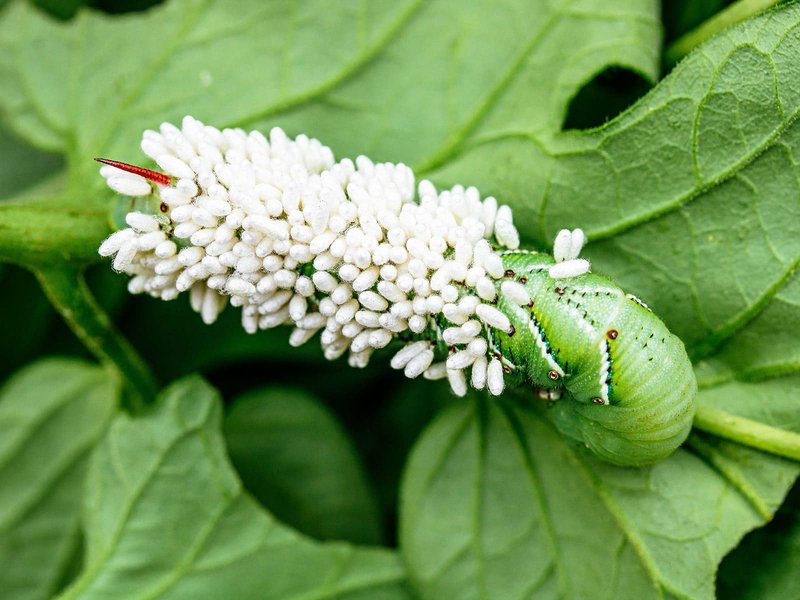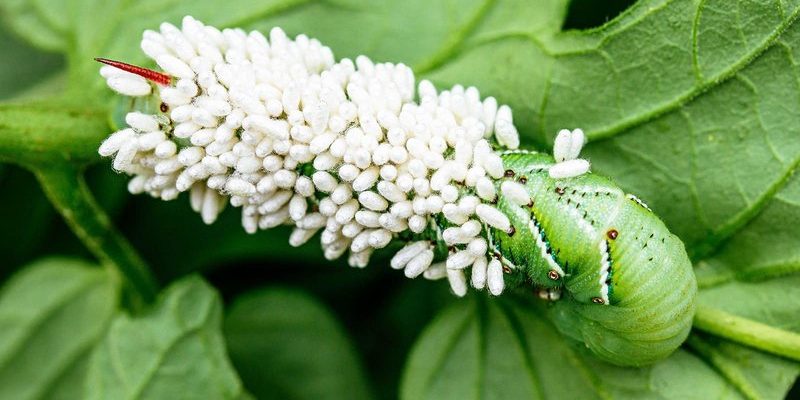
So, how do we draw these helpful birds into our gardens? It’s a blend of the right environment, food, and a bit of patience. Think of it like putting together a puzzle. Each piece—whether it’s food, shelter, or water—plays a vital role in creating the perfect landscape for our feathered friends. Let’s dive into how to attract birds that prey on hornworms and keep your garden healthy and thriving.
Why Attract Birds to Control Hornworms?
Before we jump into the how-to’s, let’s talk about why attracting birds is a smart move. Hornworms can be a gardener’s nightmare. They can practically defoliate a plant overnight, leaving you with sad, wilting leaves and fewer tomatoes to enjoy. Here’s where birds step in—they act as natural pest controllers. Birds such as **purple martins**, **wrens**, and **sparrows** love to snack on hornworms.
When you attract birds, you’re not just bringing in beautiful sights and sounds, but you’re also encouraging a healthier ecosystem. Birds not only help reduce pest populations but also assist in pollination, creating a beneficial cycle. It’s kind of like having a superhero team in your yard, fighting off the bad guys while enriching your garden.
Creating a Bird-Friendly Environment
Now that we know why birds are good for your garden, let’s explore how to create an inviting habitat. The first step is to provide **shelter** where birds can rest and nest. This could be anything from a **birdhouse** to a simple brush pile.
– **Plant native flora**: Choose native plants that produce seeds and berries, which attract birds. They’re also likely to thrive better in your local soil and climate.
– **Add shrubs and trees**: These provide spots for birds to hide and perch. Think of varieties like holly or juniper that offer both shelter and food.
– **Provide nesting materials**: Offer twigs, grass, and feathers to help them build their nests. Birds love to make their homes in cozy spots.
Consider adding a water source like a birdbath. It doesn’t have to be fancy—a simple shallow dish will do the trick. Birds need to drink and bathe, and a clean water source can be a major draw.
Feeding Birds to Attract Them
Feeding birds is another effective way to make your garden a welcoming spot. Just like us, birds appreciate a good meal, and providing food can lure them into your space. Here’s how you can do it:
– **Use bird feeders**: Fill them with seeds that birds love. Black oil sunflower seeds are a great choice and can attract various species.
– **Offer suet cakes**: Many birds love fat and protein-rich foods, especially during winter. Suet provides energy and is a magnet for woodpeckers and chickadees.
– **Plant a variety of plants**: Include flowering plants that produce seeds and nectar throughout the seasons. Coneflowers, sunflowers, and asters are great options.
Just remember to keep feeders clean to prevent the spread of diseases. Regularly wash them with soap and water, and refill them often to make sure your feathered friends don’t go hungry.
Water Sources: A Must-Have for Birds
After food and shelter, water is crucial. Birds need water for drinking and bathing, especially in hotter months. If you want to attract birds that snack on hornworms, consider these ideas for water sources:
– **Birdbaths**: They can be as simple as a shallow dish or a more elaborate birdbath with a fountain. Moving water is especially appealing, as birds are drawn to the sound.
– **Keep it fresh**: Change the water regularly to avoid becoming a breeding ground for mosquitoes. Birds love clean water just like we do!
– **Provide different depths**: Birds have unique preferences. Some prefer shallow water, while others enjoy deeper areas. Offering various depths can cater to a wider variety.
You might be surprised by how many more birds stop by when you have a reliable water source.
Choosing the Right Plants for Your Garden
What you plant in your garden plays a huge role in attracting birds. Choosing the right types of plants not only looks good but can also provide food and shelter. Here are a few top picks:
– **Sunflowers**: These are great for attracting seed-eating birds. Plus, they add a bright pop of color to your garden!
– **Milkweed**: It attracts butterflies, which in turn draw in insect-eating birds.
– **Fruit-bearing bushes**: Plants like raspberries or elderberries not only produce delicious fruit for you but also serve as a buffet for birds.
Creating a plant diversity in your garden can mimic natural habitats, making it more enticing for birds while also helping your garden thrive.
Monitoring and Patience: Key to Success
Once you’ve set the stage for your bird-friendly garden, it’s important to be patient and monitor your progress. It may take some time for birds to notice and feel comfortable in their new habitat. Here’s what to keep in mind:
– **Observe the activity**: Spend some time in your garden to watch what birds are visiting and at what times. This can help you learn their habits and preferences.
– **Adjust as needed**: If certain plants aren’t attracting birds, don’t hesitate to switch things up. Experiment with new plants or feeders to see what works best.
– **Enjoy the process**: Gardening is a journey. Take the time to appreciate the small victories, like spotting a new bird visiting.
You might be surprised at how much joy these feathered friends can bring. Over time, you’ll notice a balance between your garden’s needs and the natural habitat you’ve created.
Attracting birds that prey on hornworms doesn’t just protect your plants; it also enriches your garden with life and beauty. With the right mix of shelter, food, and water, you can create a vibrant habitat where birds thrive. Remember, it’s all about encouraging a natural balance.
So, next time you see a pesky hornworm, just know that with a little patience and effort, you can invite those helpful birds into your space. Soon enough, you’ll be enjoying a lush garden and the sweet chirps of your new friends. Happy gardening!

